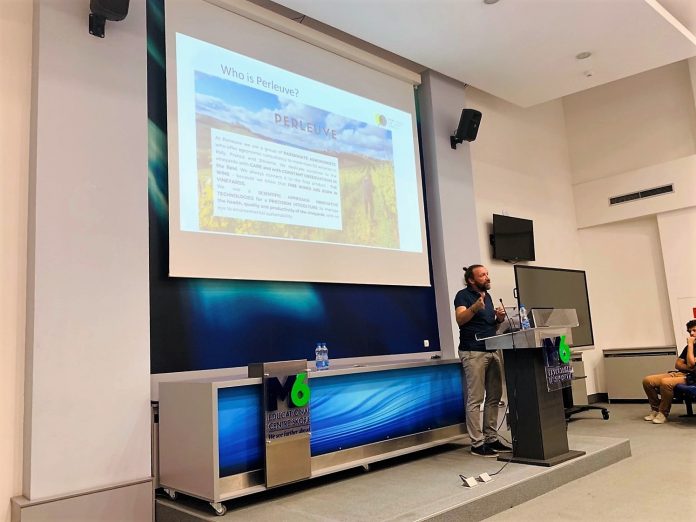Being a winegrower is rewarding, but there is a lot of effort that goes into taking care of the vineyard that makes it extremely unpredictable and hard work. Therefore, being a vineyard manager is anything but simple since there are so many aspects that need to be taken into account in order to produce the best possible quality grape. When it comes to vineyard management, winegrowers need to play multiple roles: from meteorologists, agronomists, chemists, machine operators, mechanics, financial planners, and work organizers. This practice often places a burden on the vineyard managers that stops them from taking care of the big picture, but instead forces them to micromanage different processes. This is the case in small family wineries, but also in the ones like Tikves, which have more capacity and vineyards in different locations that need to be managed.
In 2022, Tikves took the next step towards simplifying the vineyard management with the use of computer software available through a mobile application. Committing to such a crucial change is not an easy choice, but it seems it is an inevitable one. There are multiple softwares available today and they all have in common the same goal – to support vineyard managers in making smart decisions based on data. The need arises from the fact that up until now information can be overlapping in different sectors which prevents the managers from seeing a pattern, or sometimes the information is transferred through word of mouth and gets lost.
Features of the software
The software that is being used in Tikves Winery supports the team working in the vineyards. The information collected in the vineyard will no longer be “lost«, but is archived and shared in real time on the company network, so as to have a global view of the vineyard and the company at all times.
The data that is being processed focuses on real-time verification and control of the health of the grapes – through statistics of the percentage of damage for each vineyard; the quality of the grapes – through sensory analysis of the berries and other parameters; as well as the production potential for each plot – though estimate of production starting from pruning.
Now Tikves Winery has a database with all the observations of its vineyards and they are available to view in real time.
Benefits and wider influence of digital vineyard management
The winegrowers, vineyard managers, and viticulture specialists are the main beneficiaries from the use of the software. They are now set to improve their performance, grow better quality and higher quantity grapes, control vineyard management work activities, and monitor bioclimatic information of the vineyards. They have better insights into several vineyard operations, and based on the collected data can make better decisions.
Since these people are the main contributors towards the system, they are fully onboard with the process and engaged in every step of the way. They are being trained by the developers of the software from the way data is collected in the field, all the way to the data interpretation.
The software itself provides feedback which is easy to interpret and it furthermore helps with the overall management of the vineyards. A responsive system affects the lower production costs and the smarter work management.
In the end, incorporating such system will have even greater effects on the long run. Not only that this data can be used to know when to irrigate or protect vines against disease, but it can also help improve grape quality over time. It is safe to say that the wider influence of implementing this system is yet to be seen.
Digital knowledge exchange
Using this software is still in its infancy at Tikves Winery, since most of time is being spent learning and collaborating with the developers of the software. Still, Tikves is tracing the way for the rest of the wineries in the region towards a digital future.
In the case of Tikves, the software support was focused on specific areas such as: creation of vineyard maps, performing observations, vineyard anagraphics, phenology, product estimates, crop healthiness and quality, as well as agronomical advice on Lobesia botrana management.
The main purpose for using a vineyard management software is to make decisions based on completely objective information from the vineyard, instead of an opinion or a rumour. This potential has already become an integral part of the vineyard management and it can be easily replicated no matter the size of the winery or the type of vineyards because it is applicable for conventional, organic or biodynamic vineyards. The knowledge gained from this transition can be of value to other wineries but also institutes and researchers because the basis of it is in the data.


